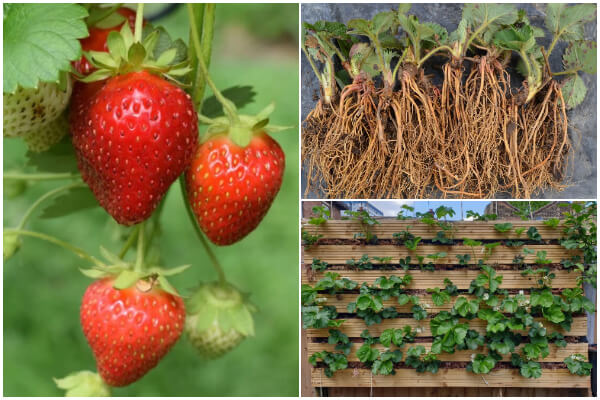Strawberries are one of the most rewarding fruits to grow at home, offering bursts of sweetness and freshness straight from your garden. They are relatively easy to cultivate, making them an excellent choice for both beginners and seasoned gardeners. With the right methods and care, you can enjoy a steady supply of strawberries year after year. This guide dives deep into eight simple and effective ways to grow strawberries, whether you have a spacious backyard or just a small balcony.
1. Choose the Right Strawberry Variety
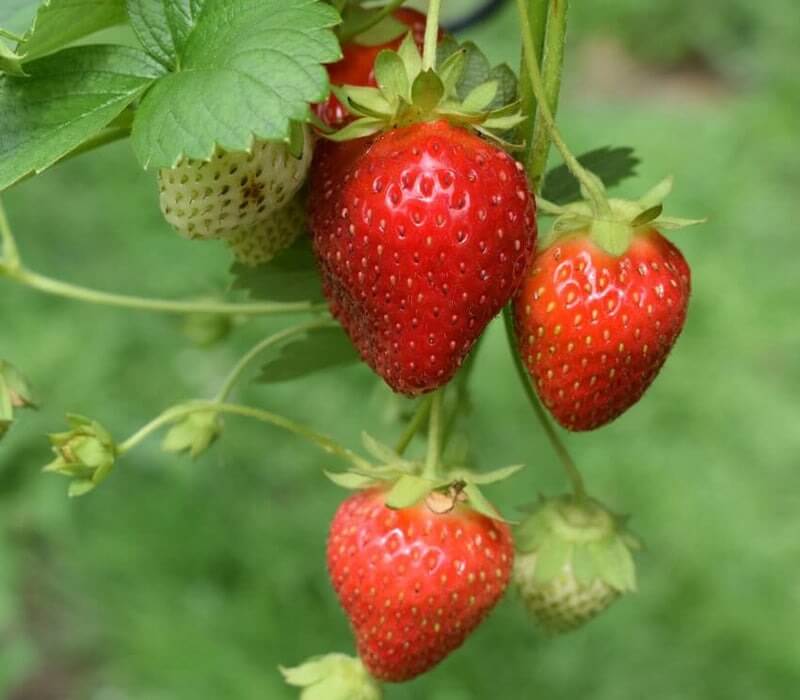
Strawberries come in three main types: June-bearing, everbearing, and day-neutral varieties.
- June-bearing strawberries produce a large harvest once a year, typically in late spring or early summer. These are ideal if you want a big crop for making jams or freezing.
- Everbearing varieties yield fruit in two or three flushes throughout the growing season, giving you a continuous supply.
- Day-neutral strawberries produce fruit steadily, regardless of day length, making them perfect for gardeners who want strawberries year-round.
Selecting the right variety depends on your climate and goals. For beginners, everbearing and day-neutral strawberries, such as ‘Albion’ or ‘Seascape,’ are easy to grow and provide consistent harvests.
2. Plant in Raised Beds for Superior Drainage
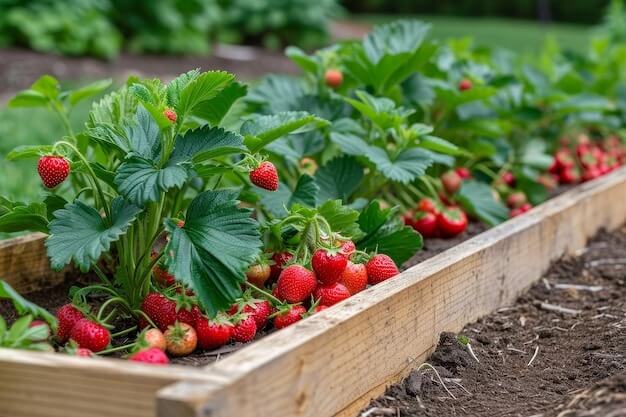
Raised beds are ideal for growing strawberries because they offer better soil control, superior drainage, and protection from soil-borne diseases.
- Soil Preparation: Fill your raised bed with a mix of loamy soil, compost, and organic matter to provide the plants with essential nutrients. Aim for a slightly acidic soil pH of 5.5–6.5.
- Sunlight: Position your raised bed in an area that receives at least 6–8 hours of direct sunlight daily.
Raised beds also make it easier to manage weeds and pests, ensuring your strawberry plants have the best chance to thrive.
3. Try Container Gardening for Small Spaces
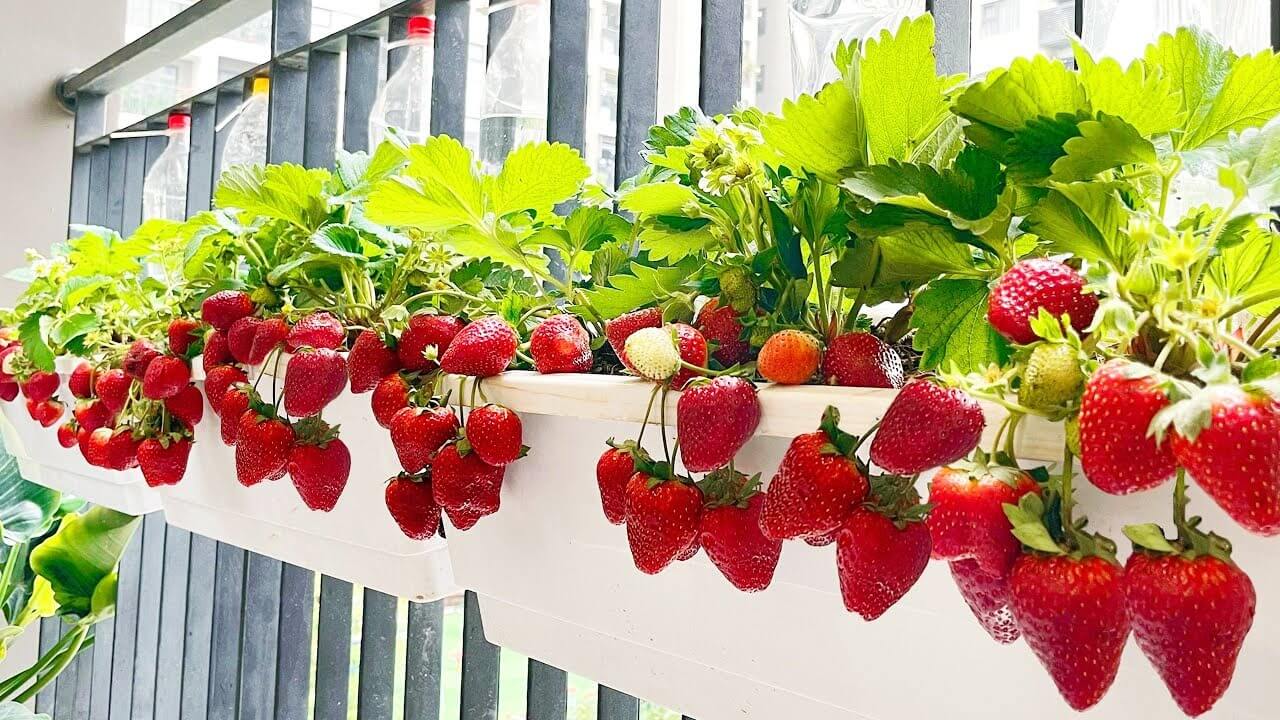
Strawberries grow exceptionally well in pots and containers, making them perfect for those with limited space.
- Container Selection: Choose pots or containers with a minimum depth of 12 inches and ensure they have proper drainage holes to prevent waterlogging.
- Soil Choice: Use a high-quality potting mix enriched with compost or a slow-release fertilizer.
- Placement: Place the containers on a sunny balcony, patio, or windowsill to ensure the plants get adequate light.
Containers are also portable, allowing you to move your strawberry plants indoors during colder weather to extend their growing season.
4. Start with Bare Root Plants for a Head Start

Bare root strawberry plants are dormant plants that quickly establish themselves when planted in favorable conditions.
- Preparation: Soak the roots in water for 1–2 hours before planting to rehydrate them.
- Planting Depth: Ensure the crown (where the leaves meet the roots) is level with the soil surface. Planting too deep can cause the crown to rot, while planting too shallow can expose the roots.
- Spacing: Leave about 12–18 inches between plants to allow for growth and airflow.
Bare root plants are an excellent choice for those who want to jumpstart their garden with minimal fuss.
5. Go Vertical with Gardening
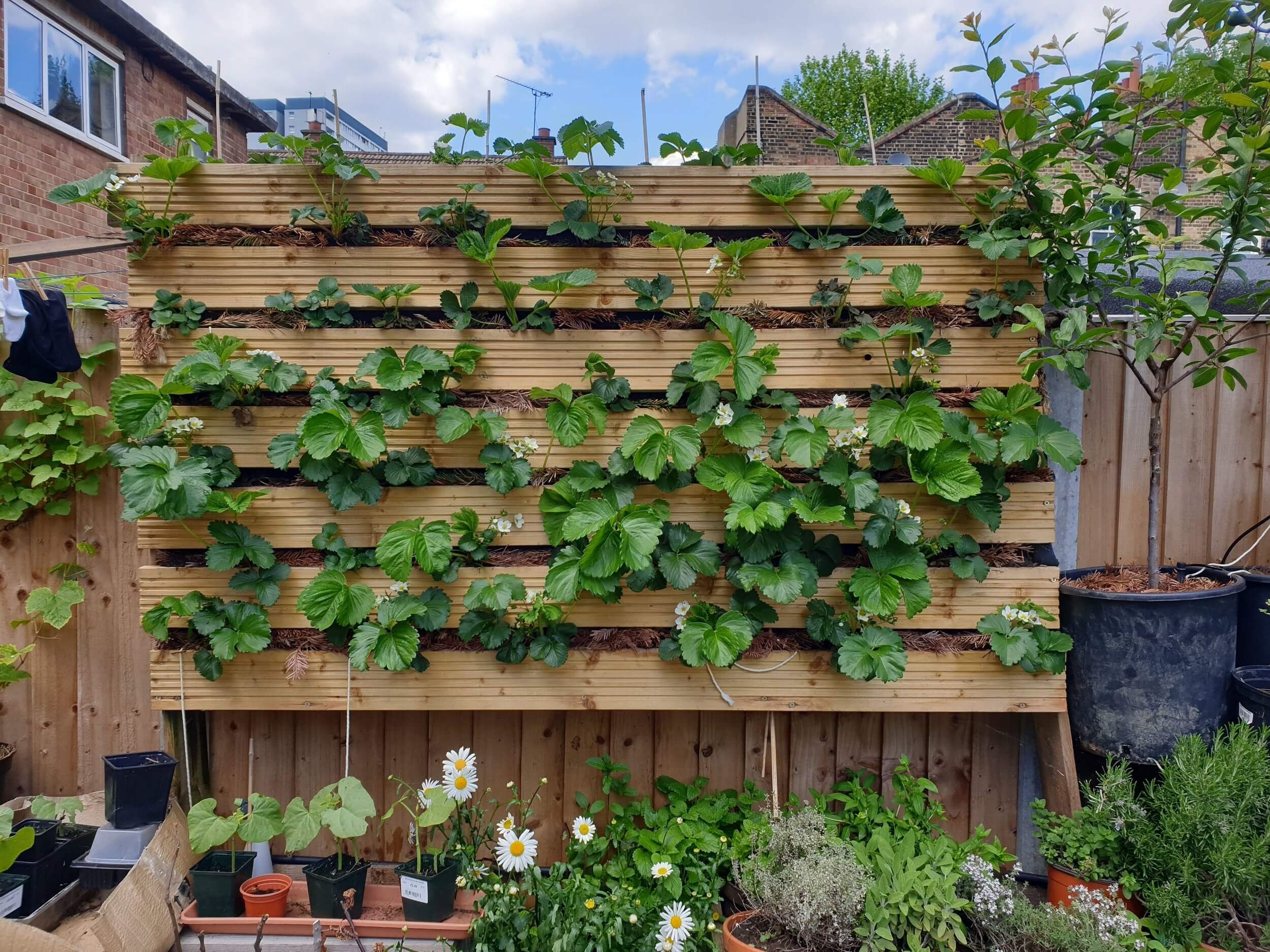
If you’re short on space, vertical gardening is a creative and efficient way to grow strawberries.
- Strawberry Towers: Use stackable planters or PVC pipes to create vertical towers that hold multiple plants in a compact area.
- Hanging Baskets: Grow strawberries in hanging baskets to add aesthetic appeal while maximizing space.
- Wall Planters: Install wall-mounted planters to cultivate strawberries along vertical surfaces like fences or walls.
Vertical gardening not only saves space but also keeps the fruits off the ground, reducing the risk of pests and diseases.
6. Master the Art of Watering
Proper watering is critical for healthy strawberry plants.
- Frequency: Water the plants deeply but infrequently, allowing the soil to dry slightly between watering sessions.
- Technique: Water at the base of the plants to avoid wetting the leaves, which can lead to fungal diseases.
- Mulching: Apply a layer of organic mulch, such as straw or wood chips, around the plants to retain moisture, regulate soil temperature, and suppress weeds.
By maintaining consistent moisture levels, you’ll encourage vigorous growth and a bountiful harvest.
7. Fertilize for Maximum Growth and Yield
Strawberries are nutrient-demanding plants and thrive when provided with proper fertilization.
- Initial Feeding: Apply a balanced fertilizer or compost at planting time to give the plants a strong start.
- Ongoing Fertilization: Use a nitrogen-rich fertilizer during the early growth phase, switching to a potassium-heavy formula once the plants begin flowering and fruiting.
- Frequency: Feed the plants every 4–6 weeks during the growing season.
Organic options like fish emulsion or compost tea can also work wonders for your strawberry plants.
8. Protect Your Strawberries from Common Pests and Diseases
Strawberries are prone to pests like slugs, aphids, and birds, as well as fungal diseases.
- Pest Control: Use bird netting to protect the fruits and organic traps for slugs. Introducing beneficial insects like ladybugs can help control aphids.
- Disease Prevention: Plant resistant varieties and ensure proper spacing to improve air circulation, reducing the risk of fungal infections.
- Inspection: Regularly check your plants for signs of pests or disease and address any issues promptly to prevent spread.
Growing strawberries at home doesn’t have to be complicated. By choosing the right variety, using techniques like container gardening or vertical setups, and providing consistent care, you can enjoy fresh, juicy strawberries all season long. Whether you’re planting in raised beds, pots, or hanging baskets, these eight methods will help you cultivate a thriving strawberry garden with ease. Start your journey today and savor the rewards of homegrown strawberries!

